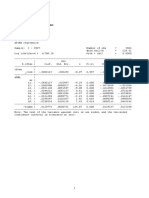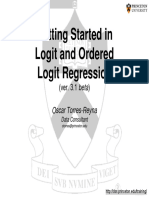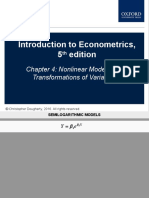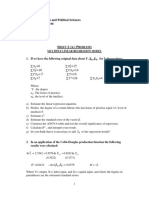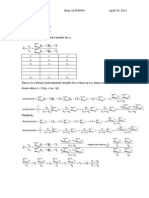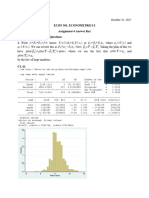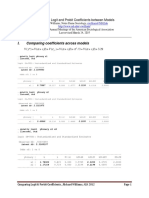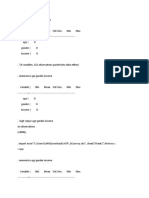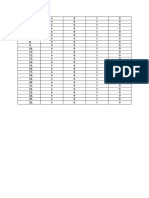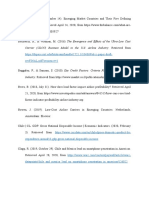0% found this document useful (0 votes)
124 views6 pagesEconomics 210 Handout # 6 The Probit, Logit, Tobit and Linear Probability Models
The document discusses different regression models used when the dependent variable is limited or censored, including the linear probability model (LPM), probit model, logit model, and tobit model. It notes problems with the LPM, such as heteroscedasticity and probabilities outside the 0-1 range. The probit and logit models use maximum likelihood estimation to estimate coefficients for an index function that assumes a normal or logistic distribution for the error term. Marginal effects are more interpretable than coefficients. The tobit model is used when the dependent variable is censored from above or below, such as number of concert tickets sold being limited by auditorium size.
Uploaded by
симона златковаCopyright
© © All Rights Reserved
We take content rights seriously. If you suspect this is your content, claim it here.
Available Formats
Download as PDF, TXT or read online on Scribd
0% found this document useful (0 votes)
124 views6 pagesEconomics 210 Handout # 6 The Probit, Logit, Tobit and Linear Probability Models
The document discusses different regression models used when the dependent variable is limited or censored, including the linear probability model (LPM), probit model, logit model, and tobit model. It notes problems with the LPM, such as heteroscedasticity and probabilities outside the 0-1 range. The probit and logit models use maximum likelihood estimation to estimate coefficients for an index function that assumes a normal or logistic distribution for the error term. Marginal effects are more interpretable than coefficients. The tobit model is used when the dependent variable is censored from above or below, such as number of concert tickets sold being limited by auditorium size.
Uploaded by
симона златковаCopyright
© © All Rights Reserved
We take content rights seriously. If you suspect this is your content, claim it here.
Available Formats
Download as PDF, TXT or read online on Scribd
/ 6














